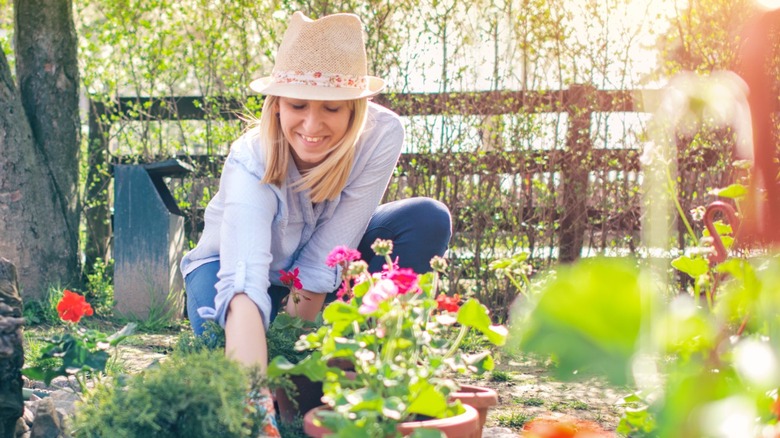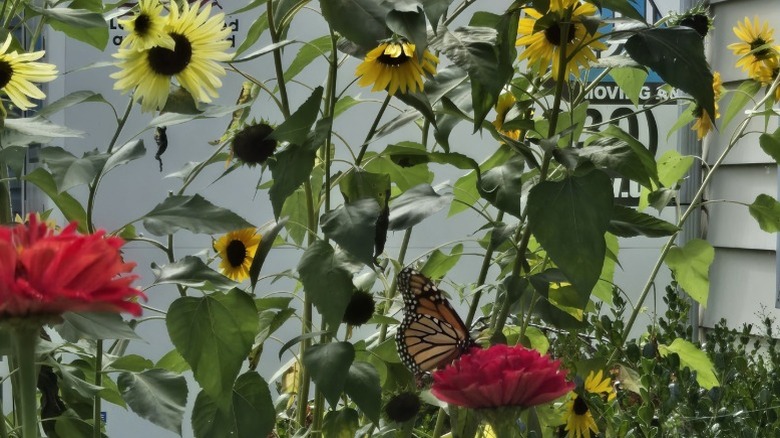These Two Flowers Are A Pollinator Powerhouse When Grown Together In The Garden
Adding companion flowers to your garden is easier than you think it is. With the right plants, you can have it all, including easy-to-grow plants, beautiful blooms, and pollinator magnets. Maximize the impact of your flower garden with two flowers that pollinators can't help but seek out: sunflowers (Helianthus annuus) and zinnias (Zinnia elegans). Together, these annual flowers attract a variety of pollinators. You can also depend upon them to be a relatively low-maintenance choice to grow almost anywhere in your garden. Whether you're looking to start a pollinator garden or incorporating flowers into a vegetable patch, sunflowers and zinnias are powerful companions.
Attract an abundance of pollinators with these cheery summer-blooming plants. Sunflowers are mainly visited by bees, including both honeybees and native wild bees. However, zinnias are popular with a wide range of pollinators, including butterflies and hummingbirds. When they're grown side by side, you'll benefit from their bold blooms, as well as the addition of more beneficial insects to your outdoor space.
Make sure to select the best cultivars when planting zinnias and sunflowers to attract pollinators. Some sunflower cultivars have been bred to totally remove their pollen. When it comes to zinnias, focus on single flowers that have a broad, flat space for pollinators to land. Butterflies, for example, prefer zinnias that have yellow centers.
Tips for growing sunflowers and zinnias as companions
Both zinnias and sunflowers are flowers that attract pollinators and are easily grown from seed. Once the threat of frost has ended in the spring, you can sow your seeds in the ground. Sunflowers should be planted 1 inch deep, while zinnias need a shallower hole of ¼ inch deep. Space your sunflower plants depending on the overall mature height, with giant sunflowers given up to 2 feet between individual plants. When spacing zinnias, ensure 8 to 24 inches between each plant, with less bushy cultivars placed closer together.
Sunflowers and zinnias make excellent companions in the garden because they enjoy similar growing conditions. If warmer temperatures have frustrated your typical flower gardening, these two sun-loving plants are plants that will survive hot summers. Plant both where they can enjoy full sun and proper warmth from spring to summer. Both species are hardy in USDA zones 2 through 11, too.
Keep in mind one major tip when growing zinnias and sunflowers together to attract pollinators. Sunflowers are typically taller than zinnias, and since both need full sun, it's important to make sure you don't plant your sunflowers in a manner that shades out your zinnia plants. You want full, beautiful blooms to entice hummingbirds, butterflies, and bees.

